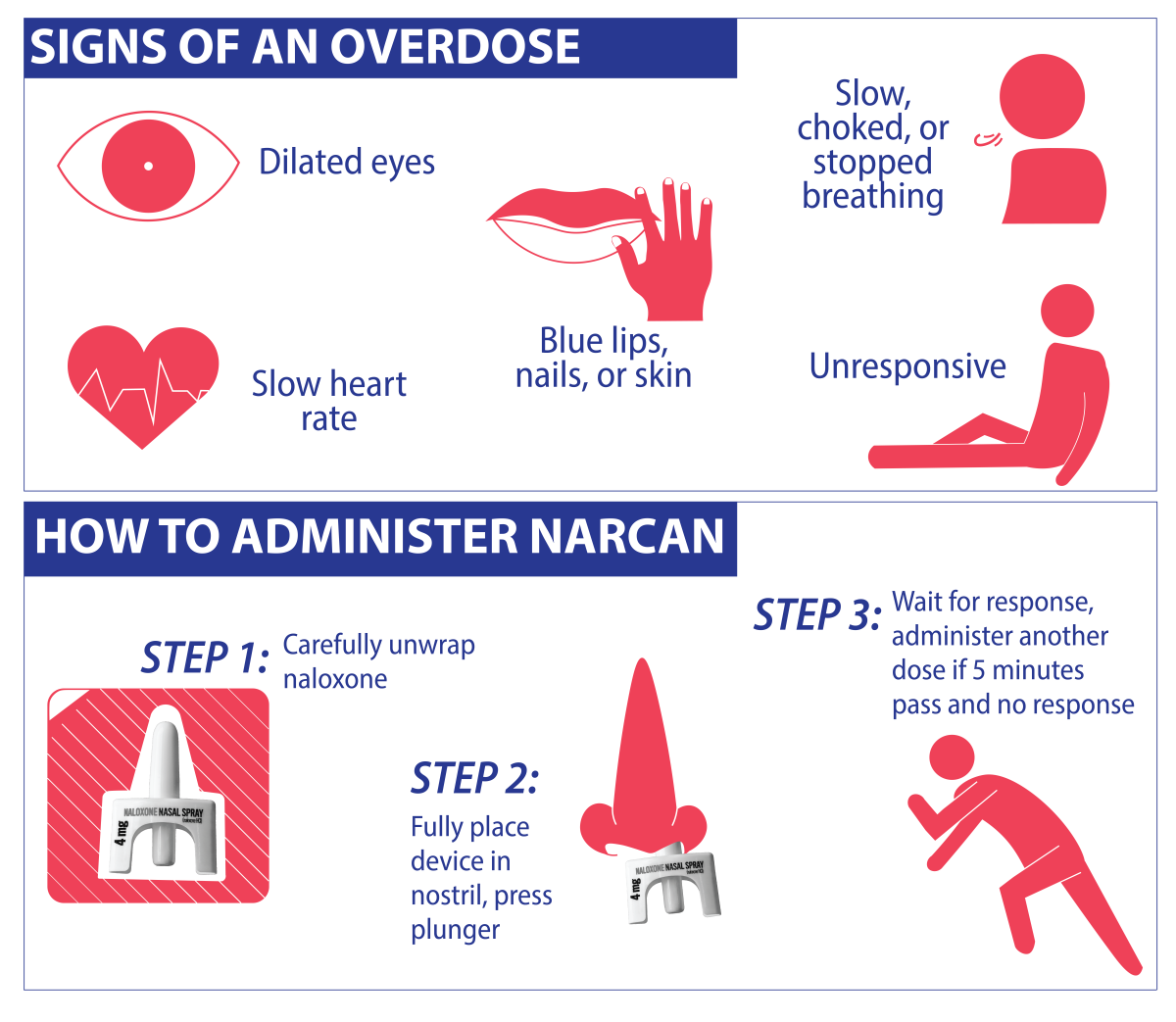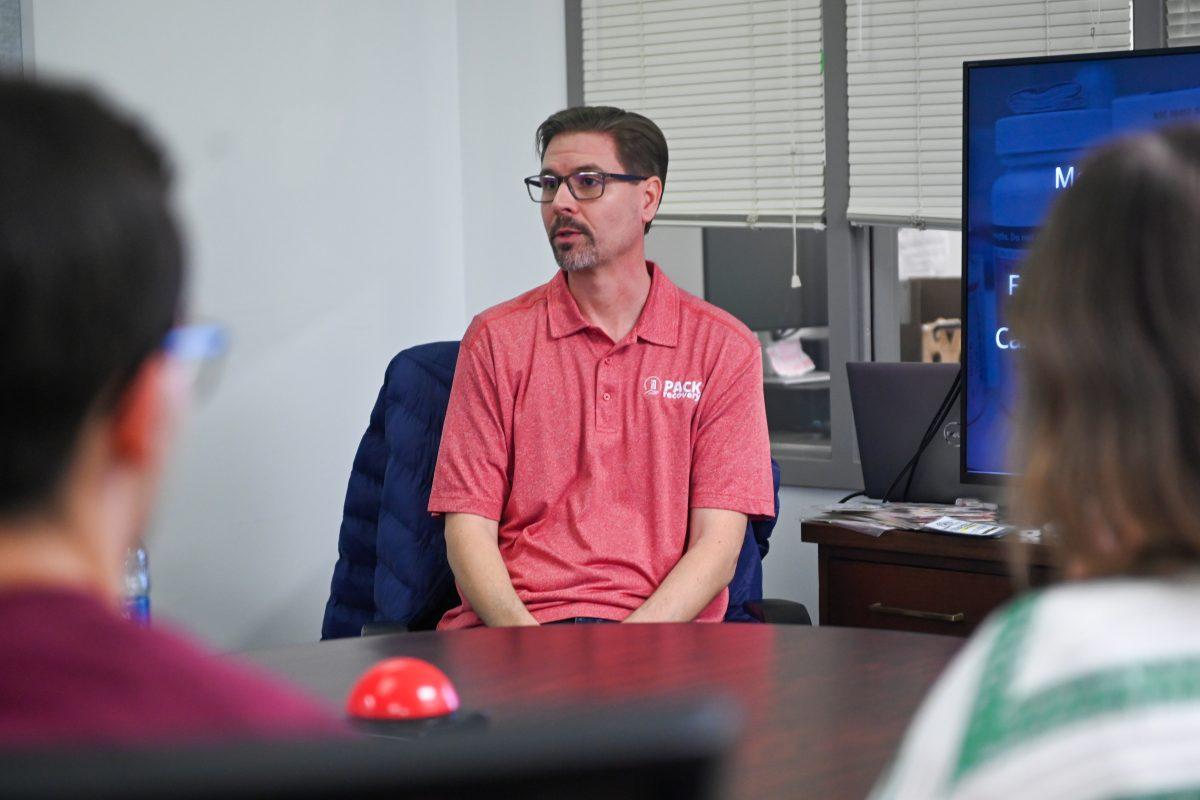Editor’s note: This article contains references to opioid overdose and addiction.
Recovery from addiction is possible. For help, please call the free and confidential treatment referral hotline (1-800-662-HELP), or visit findtreatment.gov.
Jeff Fay, alcohol and other drug education coordinator for Prevention Services, came to Technician’s newsroom to give Prevention Services’ Opioid Overdose Prevention and Education Training, which includes training on opioid prevention and effective tactics to aid in preventing overdoses.
Since 2019, drug usage and overdoses have skyrocketed in the United States. There has been a 485% increase in cocaine overdoses between 2010 and 2021. Opioid overdoses have risen too, leading the Drug Enforcement Administration to announce a public safety alert starting in the 2020s.
Fay said the main purpose of Prevention Services’ Opioid Overdose Prevention and Education Training is to raise awareness, disband the stigma behind drug use and addiction and get the word out about harm reduction.
Multiple studies show rates of opioid-related deaths decrease in areas with more opioid education and naloxone access.
Fay said understanding what exactly opioids are is an important starting point for being informed about the potential risks of opioid use. According to Prevention Services’ website, opioids are “a class of drugs that bind to receptors in the brain associated with increased pleasure and a decrease in the body’s response to pain. Opioids can either be derived naturally from the opium poppy or made synthetically.”
Fay said that some synthetic, or man-made, opioids like carfentanil are rarely prescribed to humans. However, the demand for synthetic opioids, combined with their high potency compared to other non- or semi-synthetic opioids, makes them prime substances to be illegally mass-produced and sold both on their own and laced with other drugs.
“They seized enough fentanyl in 2022 to kill everyone in the U.S.,” Fay said. “That is enough doses of fentanyl to kill 379 million people.”
Another purpose of the training was to raise awareness of the signs of an opioid overdose and educate on how to respond.
The warning signs of an opioid overdose include making coughing, choking, gurgling or snoring sounds; dizziness and disorientation; cold, blue or clammy skin; slow, irregular or stopped breathing; are unresponsive to voice or touch; and have small, constricted, pinpoint-sized pupils.
The signs of an opioid overdose are very similar to those of alcohol poisoning, but a distinction is shown primarily through one’s pupils.
“The difference between alcohol and opioid overdose remains in the pupils,” Fay said. “Dilated pupils result in alcohol poisoning, along with a non-receptive gag reflex. This is why you do not feed people bread when they are intoxicated because they could choke.”
When someone is exhibiting signs of an opioid overdose, Fay said you should call 911 and administer naloxone, commonly known by the brand name Narcan, which temporarily reverses an opioid overdose.
Narcan is available over-the-counter at pharmacies across North Carolina. Fay said if students are interested in receiving a naloxone kit, they can email him jdfay@ncsu.edu. Naloxone Saves maintains a map of where Narcan is available to purchase.
Fay said Narcan works in three to five minutes and is safe for pets, the elderly, pregnant women and children.
To use naloxone, Fay said there are three steps: peel the plastic off the packaging, place the device straight upwards in the nostril and press the plunger to spray up the nose.
Several doses can be used on one individual and may be necessary depending on that individual’s tolerance to the drug. If the individual experiencing the overdose does not respond to the naloxone within five minutes, Fay said you should administer another dose.
Fay also said some people are scared to call for help because of the fear of getting in trouble with the police; however, the Good Samaritan laws passed in 2013 provide limited immunity to those calling for help in the case of an overdose.
Another reason students shouldn’t be deterred from calling 911 in the case of an opioid overdose, Fay said, is NC State’s Howl for Help program.
Howl for Help ensures the Office of Student Conduct does not take formal disciplinary action when a student calls 911 if they are experiencing or have a friend who is experiencing an opioid overdose or alcohol poisoning.
“We want you to call the police,” Fay said. “They also want you to call so they can help; that is what they are there for; they are on the harm reduction team also.”
Other resources that Prevention Services uses to obtain help for those who are or know someone experiencing addiction at NC State are the harm reduction approach with counseling services, interventions and CRAFT skills, which provides support for individuals with family or friends who misuse opioids or alcohol.
The recovery resources page on Prevention Services’ website offers a list of resources for addiction treatment and support.
The Counseling Center can be reached 24 hours a day at 919-515-2423. If you are in a crisis situation and need immediate help, please call the National Suicide Prevention Lifeline at 988. In the case of a life-threatening emergency, call 911.
Jeffery Fay, the alcohol and other drug prevention coordinator of NC State Prevention Services presents to Technician staff about drugs and the use of Naloxone in Witherspoon Student Center on Tuesday, Jan. 16, 2024. Fay explained that Naloxone is a medication which can reverse an opioid overdose.









